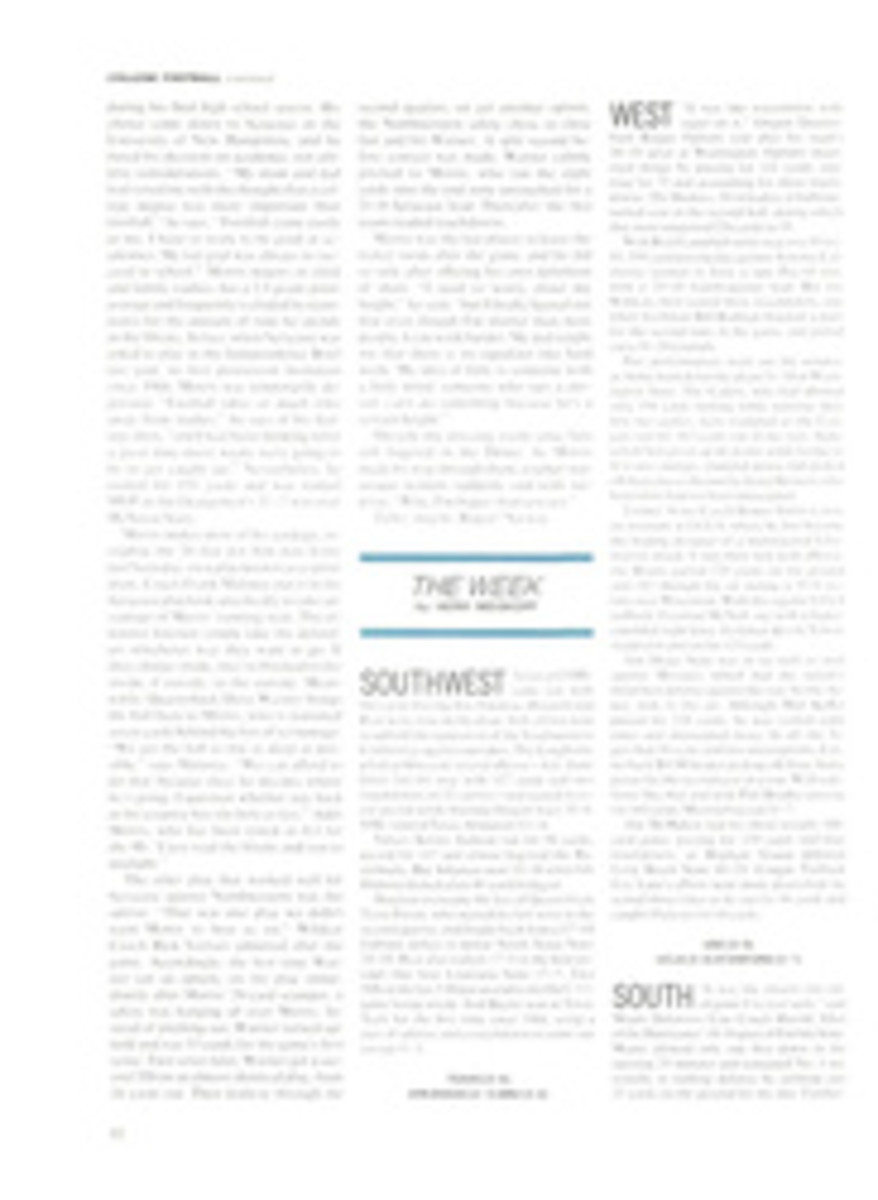
With a ball he is 10 feet tall
It's easy to spot Syracuse Running Back Joe Morris on a crowded football field. He's the little guy. He stands 5'7" short, which is almost, but not quite, big enough for him to see over his blockers' shoulder pads. True, he weighs 183 pounds, but even so he's a David among the Goliaths of the gridiron.
In the record book, on the other hand, Morris is about to become a giant—assuming, that is, he doesn't suddenly get squashed by one of those behemoths he's forever running circles around. Come November, Morris should join Tony Dorsett of Pitt and Amos Lawrence of North Carolina as the only runners in NCAA Division IA history to gain 1,000 yards in each of their freshman, sophomore and junior years. He picked up 1,001 two years ago as an unknown freshman despite not breaking into the starting lineup until the fourth game. Last year he added 1,372 more. And there's no telling how far he may go in 1980. Already he has rushed for 492 yards in just three games—a 31-21 loss at Ohio State, followed by wins the past two weekends in Syracuse's new Carrier Dome. Morris christened the 52,205-seat, fiber-glass-roofed facility on Sept. 20 by rushing for 170 yards and three touchdowns and scoring a fourth TD on a 94-yard kickoff return as the Orange beat Miami of Ohio 36-24. Last Saturday he ran for 172 yards and another touchdown in Syracuse's 42-21 defeat of Northwestern. Along the way Morris has been methodically bumping-off the titans of Syracuse football history. Last year, while setting the school's single-season rushing record, he passed the career rushing totals of Jim Nance (1,605) and Jim Brown (2,091). On his first carry this season, a 23-yarder against the Buckeyes, he overtook Ernie Davis (2,386). With his first carry Saturday against Northwestern, a 20-yarder, he moved past Floyd Little (2,704) into second place among Orange runners. Morris now needs only 70 more yards to zonk Larry Csonka (2,934) right off the top of Syracuse's alltime list. He should get that this Saturday when the Orangemen play Kansas on the fast track inside the Dome. Last year against the Jayhawks Morris rushed for 252 yards to break Csonka's school single-game record of 216.
Morris isn't the only little man making big noises this season. Going into this weekend's play, four of the NCAA's top 10 rushers, including Morris and Citadel's appropriately named Stump Mitchell, stand under 5'10". The other noteworthy small fry include Houston's leading rusher both last year and this, 5'9" Terald Clark. Stanford's Darrin Nelson, also 5'9", who had to sit out his school's 31-14 upset of Oklahoma last Saturday because of a hip injury, is the only collegian in history to rush for 1,000 yards and catch 50 passes in a single season, and he's done it twice. At Indiana, 5'7" senior Mike Harkrader has become the Hoosiers' alltime leading rusher (2,720 yards). Among the giants are North Carolina's 5'11" Lawrence, who could finish his career as the sixth or seventh leading college runner ever, and Auburn's 5'10" James Brooks, who paced the SEC in rushing last year. Still, it's Morris whom Penn State's Joe Paterno calls "pound for pound the greatest running back in America."
Appropriately, Morris made his football debut, at age eight, in a midget league. What's more, at 4' 2" he was the midget of the league, which was in Southern Pines, N.C., near Fort Bragg where his father, Earl, a Green Beret who recently retired after 28 years in the Army, was stationed. That year Morris' coach told him he was too small to be a running back and installed him at offensive guard and defensive tackle, a move Morris understandably still describes as "peculiar." As a fifth-grader Morris played quarterback and discovered that he couldn't see downfield over his own linemen. It wasn't until the sixth grade that he finally became a running back. In high school in Ayer, Mass., near Fort Devens, Morris rushed for 3,664 yards in three varsity seasons. In the process he set school game, season and career yardage records, all of which have since been erased by a 5'8" younger brother, Larry, who is now a high school senior.
Not many colleges were interested in Morris, who weighed only 165 pounds during his final high school season. His choice came down to Syracuse or the University of New Hampshire, and he based his decision on academic, not athletic considerations. "My mom and dad had raised me with the thought that a college degree was more important than football," he says. "Football came easily to me. I have to work to be good at academics. My top goal was always to succeed in school." Morris majors in child and family studies, has a 2.5 grade-point average and frequently is chided by teammates for the amount of time he spends in the library. In fact, when Syracuse was asked to play in the Independence Bowl last year, its first postseason invitation since 1966, Morris was temporarily depressed. "Football takes so much time away from studies," he says of his feelings then, "and I had been thinking what a great time those weeks were going to be to get caught up." Nevertheless, he rushed for 155 yards and was named MVP in the Orangemen's 31-7 win over McNeese State.
Morris makes most of his yardage, including the 20 that put him past Little last Saturday, on a play known as a sprint draw. Coach Frank Maloney put it in the Syracuse playbook specifically to take advantage of Morris' running style. The offensive linemen simply take the defenders whichever way they want to go. If they charge inside, they're blocked to the inside; if outside, to the outside. Meanwhile, Quarterback Dave Warner brings the ball back to Morris, who is stationed seven yards behind the line of scrimmage. "We get the ball to Joe as deep as possible," says Maloney. "We can afford to do that because once he decides where he's going, I question whether any back in the country hits the hole as fast." Adds Morris, who has been timed in 4.3 for the 40, "I just read the blocks and run to daylight."
The other play that worked well for Syracuse against Northwestern was the option. "That was one play we didn't want Morris to beat us on," Wildcat Coach Rick Venturi admitted after the game. Accordingly, the first time Warner ran an option, on the play immediately after Morris' 20-yard scamper, a safety was hanging all over Morris. Instead of pitching out, Warner turned up-field and ran 53 yards for the game's first score. Two series later, Warner got a second TD on an almost identical play, from 16 yards out. Then midway through the second quarter, on yet another option, the Northwestern safety chose to close fast and hit Warner. A split second before contact was made, Warner calmly pitched to Morris, who ran the eight yards into the end zone untouched for a 21-0 Syracuse lead. Thereafter the two teams traded touchdowns.
Morris was the last player to leave the locker room after the game, and he did so only after offering his own definition of short. "I used to worry about my height," he said, "but I finally figured out that even though I'm shorter than most people, I can work harder. My dad taught me that there is no equalizer like hard work. My idea of little is someone with a little mind, someone who says a person can't do something because he's a certain height."
Outside the dressing room some fans still lingered in the Dome. As Morris made his way through them, a rather statuesque woman suddenly said with surprise, "Why, I'm bigger than you are."
Taller, maybe. Bigger? No way.
PHOTO

